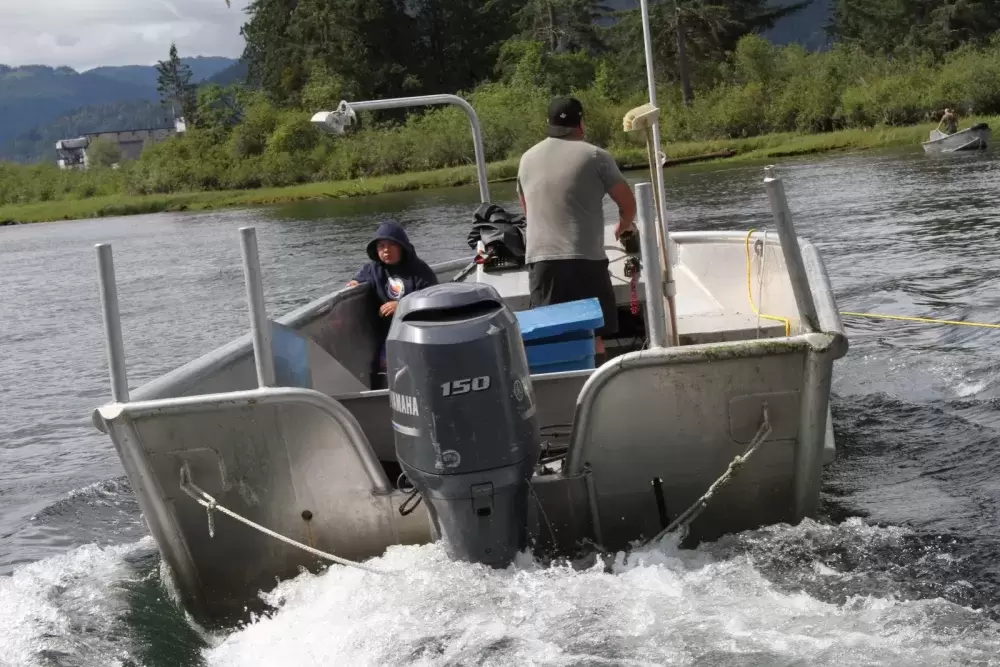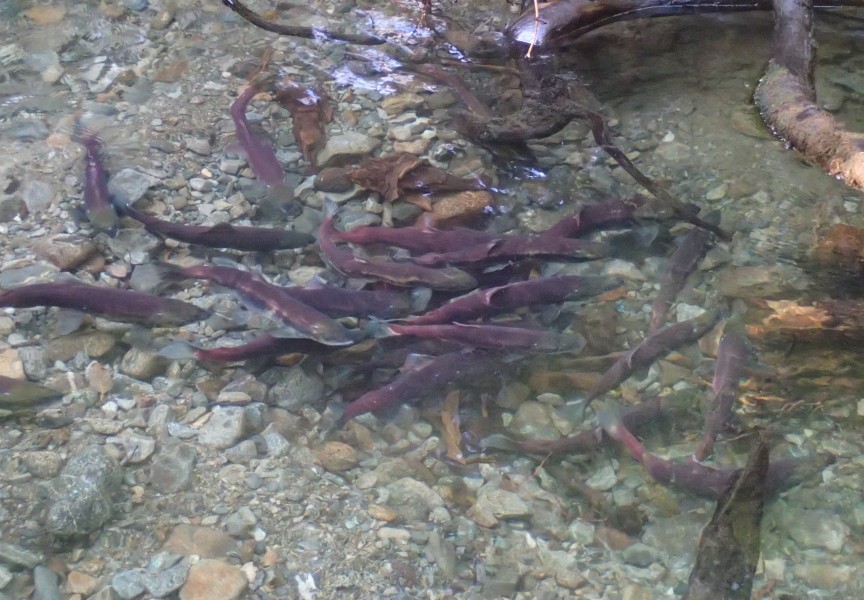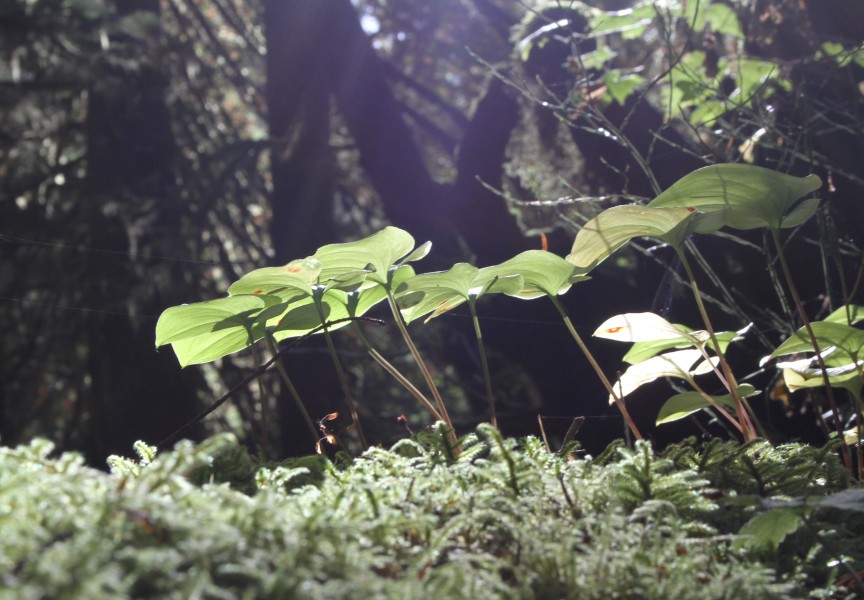This year’s sockeye salmon return in the Somass River came in around double what the pre-season run size estimate was.
While the Somass River pre-season forecast hovered around 400,000, it was re-forecasted to 950,000 as of July 28.
It’s a trend that is being observed coast-wide – from Bristol Bay to the Fraser River, according to Tseshaht First Nation Fisheries Manager Dave Rolston.
“I think all the fisheries benefited from increased numbers,” he said.
Uu-a-thluk Deputy Program Manager Jim Lane said the bulk of the returning fish are four years old, meaning that ocean conditions were “favourable for their growth and survival” when they entered the ocean as juveniles in 2020.
Forecast models that predict run sizes are made based on the assumed ocean survival at the time juvenile salmon enter the sea, he said.
“And that’s unknown until they come back and you can see what their survival is,” Lane said.
A management forecast is used to dictate the amount of allowable catch open to fisheries, he added.
It’s designed to be “precautionary” so that early returning fish are protected, Lane said.
The management model is adjusted during the fishing season as more information on the size of the run is gathered as the fish enter the system.
This year’s wet spring and the high snowpack in B.C.’s higher mountain elevations contributed to high water levels that were cool in temperature at the beginning of the run.
Because of these “favourable” conditions, Lane said the sockeye salmon quickly migrated up the river.
The challenge with this is that it’s difficult to gauge whether the salmon are simply migrating quickly, or if it’s a really big run, Lane said.
“It’s confounding,” he said.
All of these considerations go into the decision-making process, Lane said.
The Somass River sockeye production originates in Great Central and Sproat Lakes.
While the increased run size meant there were greater opportunities for fishermen to generate revenue, Rolston said the fishery was “constrained by the initial run-size estimate.”
By the time the run-size was re-forecasted, Lane said a lot of the fish had already swam up the river.
It’s a balancing act between being “very cautious” about how the run is regulated, while also trying to “provide an opportunity for people to earn a living,” Rolston said.
“It [was] kind of a scratch fishery,” he said. “People put hours and hours in and only got small amounts of fish.”
Towards the end of the sockeye run, Rolston said there were “quite a number of tired fishermen who spent many, many hours fishing for not a lot of fish.”
Les Sam was among the first fishermen on the Somass River at the beginning of the season in June.
Because the water was so high and fast, many didn’t risk it and waited until the middle of the run, he said.
“The fishing was pretty treacherous in the early part of the run,” he said. “I lost a little bit of gear. I ripped up nets on snags and stuff. If the fast water pushes you onto something, it’s hard to pull it off.”
Sam keeps a knife at the front and the back of the boat in case he needs to cut himself free.
“You have to have caution and fear and understanding of what can happen if things go wrong," he said.
The 65-year-old has been fishing since he was taught by his father when he was only 5 years old.
For Sam, the risk of losing gear is worth being out on the water early.
“I’m a fisherman,” he said. “I have to catch fish to make a living.”
Around 28,000 sockeye salmon were given to Tseshaht members through the community distribution, Rolston said.
Meanwhile, the total catch between Tseshaht and Hupačasath First Nations’ economic opportunity fishery was just over 90,000, he said.
French Creek Fresh Seafood and Hub City Fish Market are two of the economic opportunity fishery’s largest buyers, while smaller brokers and roadside sales make up the rest, Rolston said.
If the fishery is able to get sockeye to the market before Bristol Bay or any other Alaskan fishery opens, Rolston said they’re usually able to charge around $4.50 per pound.
But as soon as Bristol Bay opens, Rolston said “they just flood the market with sockeye.”
This can cause the market value to drop to around $2.50 a pound, he added.
“At that point, there's more incentive for our members to get more money for their fish by selling roadside or to specialty buyers,” Rolston said.
Now that the sockeye run has mostly passed, fishermen are preparing for the Chinook.
“It’s kind of the money fish,” Rolston said.
Although the openings are shorter, chinook are typically more valuable because they’re the largest of the Pacific salmon.
The 2022 forecast return of the Stamp River and the Robertson Creek Hatchery adult chinook to Barkley Sound and the Alberni Inlet is 135,000.
After a period of a modest increase among wild populations, Fisheries and Oceans Canada (DFO) wrote that chinook salmon escapements have been decreasing over the last four years for many wild stocks.
Fewer than 100 spawning salmon have been observed in some rivers in the South West Vancouver Island in recent years.
“Wild West Coast of Vancouver Island chinook therefore remains a stock of concern,” the DFO wrote.
While Rolston said it’s easy to “get caught in depression” around changes to the ocean environment, “there’s always hope.”
“Every fisherman has to be optimistic,” he said. “You also need to be realistic – especially if you're trying to earn a living.”







